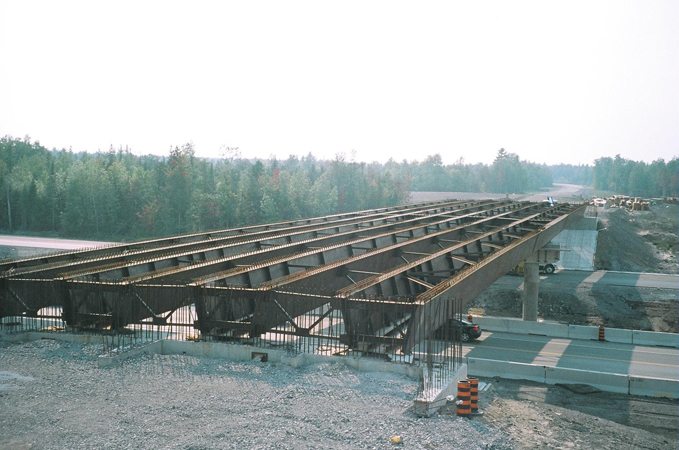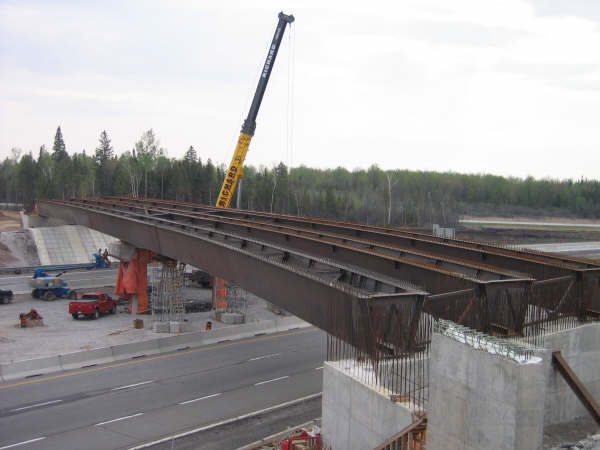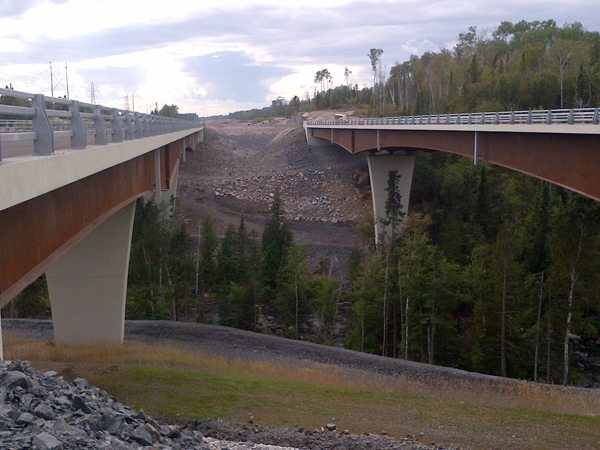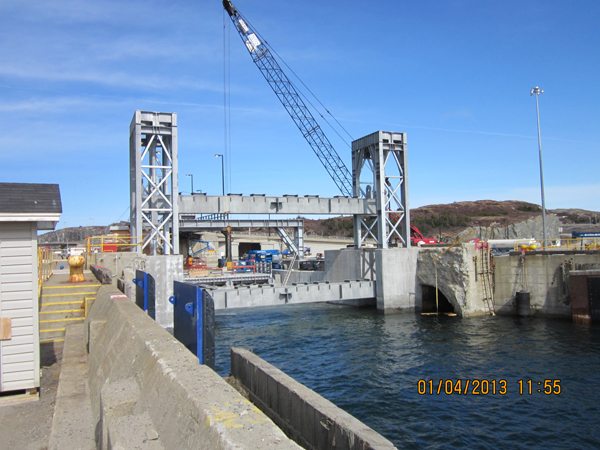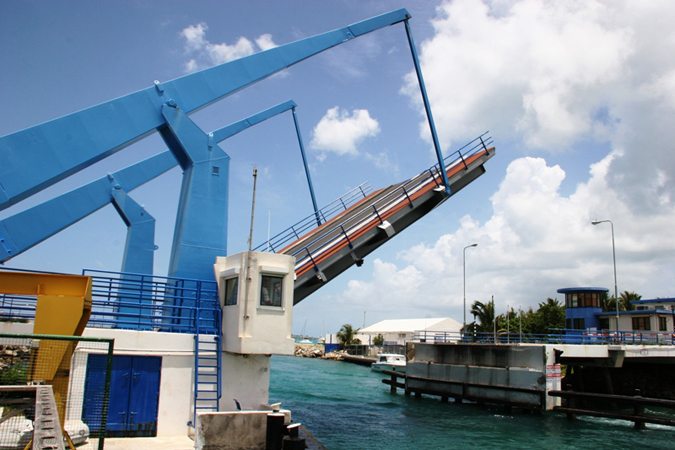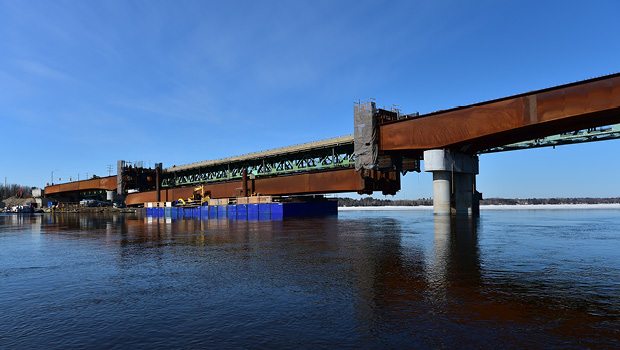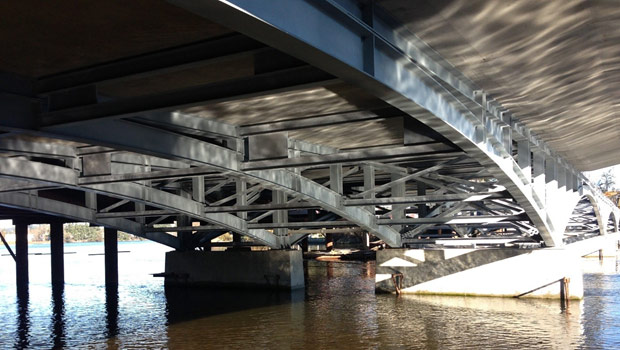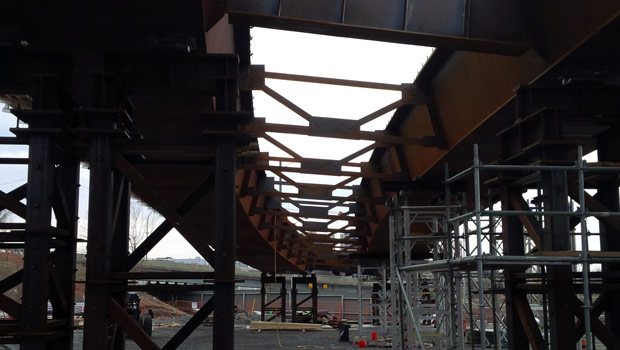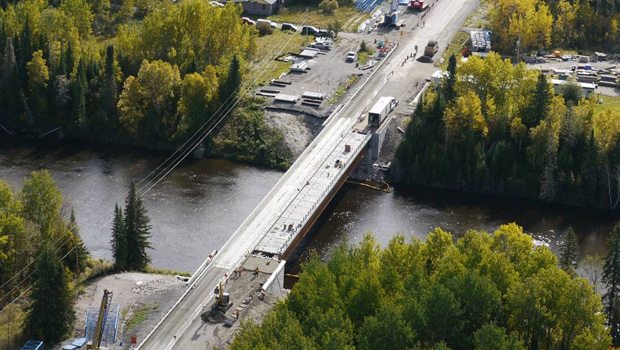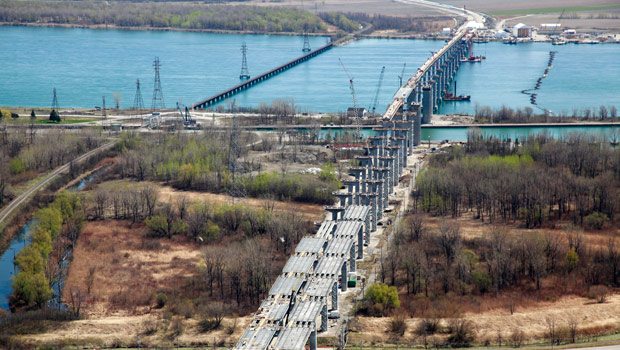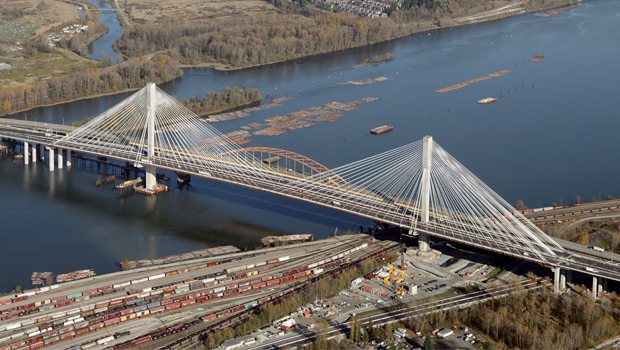The Strength of Steel in Bridges
Steel’s inherent strength, light weight, versatility, and high recycled content make it ideal and the most sustainable choice for bridge projects.
Steel’s high strength-to-weight ratio makes it an ideal choice for long spans.
Offsite steel fabrication enhances project efficiency, reduces construction periods, and lowers costs.
Lighter steel structures attract lower seismic forces.
The CISC Quality Certification program for bridges ensures the highest quality and safety standards for your project
Pont des Allumettes
Project Description The structure formed by two box girders cut into 22 segments, comprises 1,880 tons of steel components. The complexity of this project is characterized by the high weight of the box girders of up to 91 tons and its tight schedule. Project Team Owner:Travaux Publics et Services Gouvernementaux Canada Structural Engineer: Delcan, a PARSONS Company & DPHV Project Manager / General Contractor: Pomerleau Fabricator: Canam-Ponts, division de Groupe Canam Detailer: Tenca Steel Detailing Inc. Erector: Montacier
Craigflower Bridge Replacement
Project Description The Craigflower Bridge has been in operation since the early colonial days of Victoria, and this recent replacement is believed to be the fourth bridge on this site. As part of the Hudson’s Bay Company’s historic Craigflower Farm, the bridge served as a transportation link between Craigflower School and Craigflower Manor, both National Historic Sites. The bridge site also has unique archaeological merit, encompassing three distinct periods and types of human habitation which span thousands of years. Herold Engineering was selected as the Prime Consultant and bridge designers for the project for [...]
Lee’s Avenue Bridge
Project Description The Lee’s Avenue Underpass consists of two rising, curved, trapezoidal girder lines, spanning over an 86.8m opening over Highway 417 in Ottawa. The structure was erected onto off-site temporary shoring. A concrete deck was formed & poured on the erected steel on temporary shoring. Self propelled modular transporters (SPMTs) lifted the poured structure off the temporary shoring and travelled this large structure to its final location during the allotted shut-down time. At 2100 tonnes, the bridge is the heaviest bridge to be erected by rapid replacement over a highway in North America. [...]
Chukuni River Bridge Replacement
Project Description Key features of the Chukuni River Bridge design included: The use of a single span structure resulted in the elimination of pier construction in the water. This minimized environmental and approval impacts and also reduced the construction cost and schedule; The replacement of the bridge on the existing alignment avoided unnecessary road works, property acquisition and mitigates environmental impacts; The use of staged construction while maintaining one lane of traffic avoided the need for a temporary modular bridge and associated costs. Construction traffic was maintained in a one lane operation using temporary [...]
Dawson Bridge Rehabilitation, Alberta
Innovative steel deck turns historic bridge into modern world leader While Edmonton’s Dawson Bridge has been in service for nearly 100 years, innovative technology used in its recent rehabilitation has turned it into a modern world leader. The five-span riveted steel through-truss bridge was originally built to carry electric trains to a coal mine on the east bank of the North Saskatchewan River. Later converted to carry automobiles, the bridge currently accommodates 17,000 vehicles per day along with significant pedestrian and cyclist traffic. After almost a century of use, the bridge needed significant repair [...]
A30 PPP Pont Canal Beauharnois
TEAM Nouvelle Autoroute 30 CJV & Tenca • Arup Canada • Ministère des transports du Québec • Nouvelle Autoroute 30 SENC • Structal – Ponts, division de Groupe Canam
Pont Deh Cho, Fort Providence, North West Territories
TEAM Structal-Ponts, division de Groupe Canam & Tenca • Associate Engineering • Community Partners Deh Gah Got’ie First Nation • Government of the Northwest Territories • Infinity Engineering Group Ltd. • Rapid-span structures • Ruskin construction Ltd.
Port Mann Bridge
The Port Mann Bridge Highway 1 project was tendered in 2007 as part of the Gateway Program in Vancouver, B.C. The project was part of the B.C. government’s program to upgrade the transportation network in the Vancouver Region in order to ease congestion on Hwy 1. The scope of the project included upgrading approximately 37 kilometres of highway, including the existing bridge crossing of the Fraser River. The project called for doubling the capacity over the river, expanding the five-lane facility to 10 lanes.Port Mann Bridge main span Canron Western Constructors LP live up to the challenges
Ensuring that our members and associates are well informed about steel bridge construction is important to the CISC. Areas relating to code compliance, safety, security, innovation and the environment are all key issues.
The CISC is taking a leadership role in developing future bridge inspection programs. This is in effort to optimize decision making for replacement, restoration and maintenance issues relating to bridges. In excess of 40% of the bridges currently in use in Canada were built over 50 years ago and a significant number of these structures need reinforcement, rehabilitation, or replacement.

The chart shows the average age of bridges by Authority. Reference
Steel has high tensile and compressive strength, easily meeting structural requirements and the installation of steel bridges is more versatile and efficient. It offers cost savings in using skilled labour, as steel is produced in the workshop. Transportation, demolition and facility in conducting repairs are also strong advantages to steel bridge construction.
The high quality of steel for bridge construction and innovative construction methods, have made the production, fabrication, delivery and installation of long span steel bridges a preferred option, resulting in a uniform level of performance. Steel offers great advantages over other construction materials, due to its capacity to better withstand stress and fatigue, and its higher seismic resistance.
Steel bridges also offer economic advantages, are extremely durable and are adaptable to different locations. They are also resistance to climate change, since steel is produced under tightly controlled mill conditions and is homogeneous and predictable in behavior.

